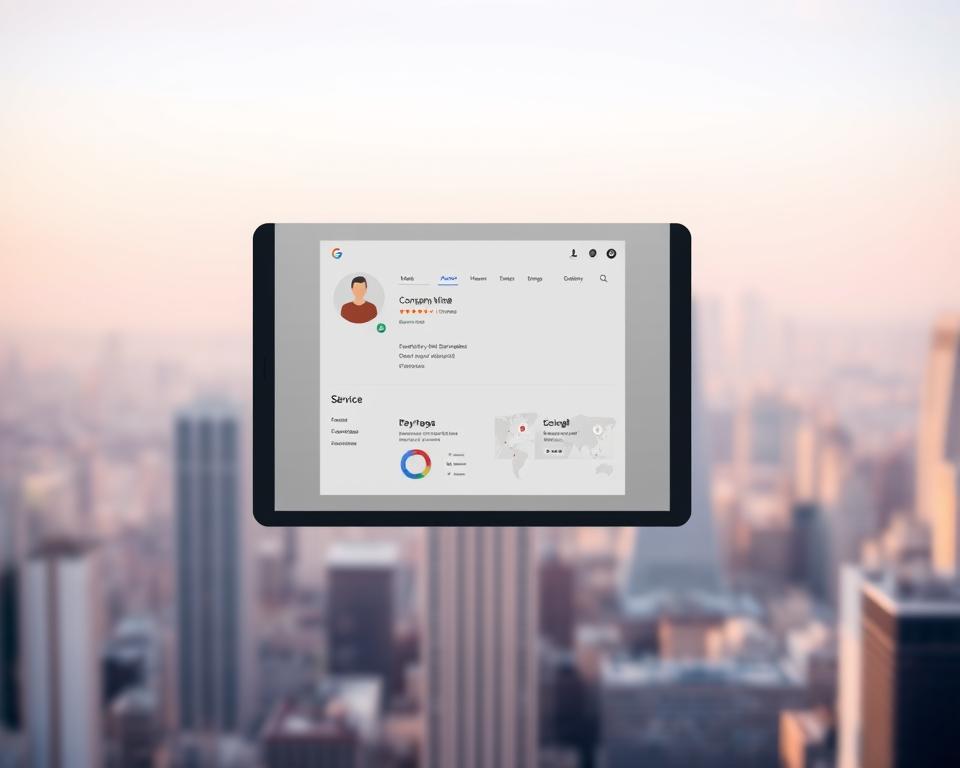Perfect SEO on WordPress: Rapid Playbook
Research shows 78% of firms running WordPress achieve enhanced search-engine positions after deploying strategic SEO tactics. WordPress SEO fine-tuning has evolved into a vital cornerstone for digital triumph. It transforms websites from obscure to magnetic for search engines.
WordPress offers a formidable framework for website owners seeking to boost their digital footprint. With native functions and adaptable optimization tools, WordPress SEO offerings can help businesses rise on results pages effectively. SEO Marketing Nerds advise capitalizing on these built-in capabilities to establish a solid digital presence.
Our guide will walk you through the most effective SEO for WordPress, exposing pro tips that turn your site into a ranking magnet. Be you a WordPress search expert or a business owner, these strategies will let you unleash your site’s full potential using manual SEO WordPress.
From understanding basic optimization techniques to deploying sophisticated tactics, this guide offers actionable insights to enhance your WordPress website’s search results. Prepare to plunge into the universe of WordPress SEO and observe your online visibility skyrocket.
Getting to Know WordPress SEO Basics
WordPress and SEO are in natural sync, improving your site’s visibility in search results. As a versatile content management system, WordPress creates a solid base for SEO initiatives.
Understanding WordPress SEO essentials can transform your site’s online presence. It delivers distinct advantages for SEO experts and site owners alike:
- Lean HTML code structure
- Mobile-friendly layouts
- Easy content editing
- Vast plugin marketplace for SEO enhancements
Selecting WordPress.org instead of WordPress.com offers you total control for SEO fine-tuning. The host-your-own version allows for greater customization, vital for high-level SEO methods.
WordPress’s SEO benefits are many:
- Flexible permalink structures
- Fast content publishing
- Straightforward metadata handling
- Native features for search-engine discovery
To boost SEO on a WordPress site, it’s imperative to understand these basic elements. Winning WordPress SEO requires a deliberate blend of technical tuning and high-quality content.
Insider tip: A WordPress SEO specialist always values user experience alongside search-engine requirements.
Essential WordPress SEO Adjustments
Configuring the right SEO settings is crucial for any WordPress site. A well-configured WordPress SEO setup can significantly boost your site’s search-engine performance and visibility. Professional WordPress SEO firms stress a methodical approach to these essential configurations.

Below are the crucial settings that turn your WordPress site optimized for search:
- Optimize Permalink Settings
- Use clean, keyword-rich URL formats
- Include targeted keywords in permalinks
- Avoid long, convoluted URL strings
- Build XML Site Map
- Provide a complete sitemap
- Upload to Google Search Console
- Ensure all key pages are indexed
- Install SSL Certificate
- Switch to HTTPS for stronger security
- Enhance WordPress Google SEO ranking signals
- Protect user data
A WordPress SEO pro plugin can make easy these settings. During your WordPress SEO assessment, concentrate on maintaining a clean base that search engines will favor. Prioritize logical architecture, fast loading speeds, and logical content hierarchies.
Pro Tip: Regular optimization is key to sustaining solid search-engine ranking.
Keep in mind, these WordPress SEO-friendly settings are your starting point toward better digital exposure and search rankings.
Adding SEO to WordPress
To raise your WordPress site’s exposure, a strategic approach is vital. Knowing how to add SEO to WordPress can dramatically boost your online presence and pull in more qualified traffic.
A variety of approaches can enhance your site’s search-engine standing. These include:
- Craft title tags and meta descriptions
- Create valuable content
- Leverage WordPress local SEO techniques
- Establish solid internal architecture
- Boost image optimization
WordPress SEO best practices highlight several key areas. Content quality is still the #1 factor in search-engine rankings. Your website should deliver useful information that answers user needs.
For brick-and-mortar companies, focusing on geographic-specific keywords is crucial. This means incorporating location-based phrases and publishing content that speaks with your regional readers.
Effective SEO is about building a frictionless user experience while showing relevance to search engines.
Back-end optimization is a pivotal component of your WordPress SEO strategy. Ensure your website loads quickly, is responsive, and has a logical, clear structure. This allows for search engines to understand your site.
Selecting Your Ideal WordPress SEO Plugin
Choosing the ideal SEO plugin can dramatically enhance your WordPress website’s search results. Regardless if you’re a beginner or an advanced SEO practitioner, you need capable tools to tune your site successfully.
When reviewing WordPress SEO plugins, consider these critical factors:
- User-friendly interface for WordPress on-page SEO
- Comprehensive optimization features
- Real-time content analysis capabilities
- XML sitemap building
- Schema markup integration
Popular WordPress SEO plugins to consider include:
- Yoast SEO: Robust content optimization tool
- All in One SEO Pack: Extensive feature set
- Rank Math: Advanced configuration options
A WordPress SEO firm typically suggests plugins that ease technical optimization while offering detailed site analysis. Key considerations include usability, performance impact, and alignment with your specific SEO site WordPress targets.
Expert insight: Always sandbox plugins in a staging environment before full implementation.
Choose a plugin that aligns with your skill level and offers clear guidance for improving your site’s search-engine rankings.
On-Page SEO Optimization Techniques
Mastering on-page SEO is vital for WordPress sites striving for higher search-engine rankings. Simple SEO WordPress tactics can greatly increase your content’s visibility. This, in turn, draws more search traffic to your site.
Primary optimization techniques include:
- Creating persuasive title tags with target keywords
- Writing engaging meta descriptions
- Organizing content with strategic header tags
- Using short URLs
When using WordPress SEO assistance, it’s essential to create descriptive title tags. These should be between 50-60 characters long. Put your primary keyword at the beginning and include your brand name at the conclusion. These strategies aid search engines understand your content’s relevance.
For best results, focus on fine-tuning your content structure. Use H1 tags for main titles, H2 for section headings, and H3 for subsections. This tiered approach improves both readability and SEO effectiveness.
URL optimization is another key aspect of SEO optimisation WordPress. Ensure your URLs are short, descriptive, and include targeted keywords. Skip complex structures that can puzzle users and search engines alike.
Remember: On-page SEO is about creating high-value, easily understood content that helps both users and search algorithms.
SEO-Focused Content Tactics
Developing powerful content is the foundation of WordPress search optimization. An effective WordPress SEO optimization service needs a strategic content approach that attracts both search engines and audiences.
Using WordPress longtail keyword SEO involves several key steps:
- Conduct thorough keyword research to discover high-value search terms
- Create content that specifically addresses user questions
- Create unique, insightful insights not found elsewhere
- Optimize content for easy scanning
When tuning SEO on WordPress, center on crafting high-quality content that offers true value. Quality outweighs quantity always. Use long-tail keywords naturally within your text, ensuring they blend seamlessly with the content.
To boost SEO WordPress results, consider these content tactics:
- Produce detailed articles
- Consistently update current content
- Use internal linking to link related posts
- Keep a regular publishing schedule
Strong content is the bridge between your website and your visitors’ needs.
By applying these WordPress search optimization techniques, you’ll create captivating content that not only ranks well but also offers tangible value to your readers.
Back-End SEO Strategies
Technical SEO is the heart of a robust WordPress site optimization roadmap. The right technical elements can greatly improve your website’s search-engine performance and user experience.
When configuring SEO for WordPress, several key technical factors need attention. Site speed is a core ranking factor that immediately influences search results. Google’s Core Web Vitals now evaluate websites based on loading performance, interactivity, and visual stability.
- Optimize site speed through caching plugins
- Reduce HTTP requests
- Optimize and scale images
- Take advantage of browser caching
For WordPress site SEO optimization, look into implementing structured data and schema markup. These technical elements enable search engines get your content with greater accuracy. This can potentially boost rich snippet displays in search results.
Mobile optimization is another pivotal technical SEO component. With mobile-first indexing, ensuring your WordPress website performs seamlessly across devices is mandatory. Responsive design and speedy mobile performance are a must-have for ranking well.
Pro Tip: Use premium SEO WordPress plugins to simplify complicated optimization tasks.
By utilizing these technical SEO tactics, you’ll establish a solid foundation for improved search-engine visibility and user experience on your WordPress website.
WordPress Image SEO
Graphics is crucial for WordPress sites. Optimizing images for SEO can significantly boost your site’s speed and search results. Well-optimised and tagged images boost user experience and SEO.
Effective image optimization entails several key strategies:
- Compress images to minimize file sizes without losing quality
- Use descriptive file names with relevant keywords
- Add keyword-based alt text for search-engine understanding
- Use lazy loading to speed up page load times
When optimizing your WordPress site for SEO, keep in mind these image optimization techniques:
- Pick the right file format (JPEG for photographs, PNG for graphics)
- Scale images before uploading
- Use WordPress SEO plugins like Yoast or EWWW Image Optimizer
“Images are not just visual elements; they’re potent SEO tools when used smartly.” — Digital Marketing Expert
Embedding WordPress SEO internal links and WordPress SEO links within image captions can further enhance your website’s search presence. Keep in mind, well-optimized images contribute to faster load times and better user engagement.
Structuring Your WordPress Site
Internal linking is a vital element in technical SEO for WordPress, significantly improving your site’s search-engine ranking. It assists search engines understand your site’s layout and spreads page authority across pages. This is essential for better search-engine visibility.
When tuning your WordPress site for search engines, keep in mind these vital internal linking strategies:
- Create a logical site hierarchy for simple navigation
- Use contextual anchor text for context
- Link to related content on your WordPress homepage
- Emphasize linking to your key pages
For efficient SEO on your WordPress site, add links naturally. This means adding links where they deliver real value to readers. Thoughtful internal linking greatly benefits WordPress on-page SEO, helping search engines in understanding your site’s content structure.
Expert advice: Think of internal links as a guide that guides both users and search engines through your website’s content landscape.
By using a strategic internal linking plan, you’ll improve user experience, streamline site navigation, and raise your WordPress site’s search-engine exposure.
Speeding Up WordPress
Site speed is a major factor in WordPress SEO performance. Search engines, like Google, favor websites that render quickly. This renders speed optimization vital for better search positions and a superior user experience.
To enhance your WordPress site’s speed, begin by measuring its current performance with tools like Google PageSpeed Insights. This tool pinpoints areas for enhancement in loading times.
- Use caching plugins for WordPress SEO optimization
- Implement a Content Delivery Network (CDN)
- Cut HTTP requests
- Shrink images and media files
Yoast SEO WordPress users can access extra speed optimization features. Reducing server response times and pruning your WordPress database are essential for better site performance.
Key WordPress SEO hints for speed include:
- Select lightweight themes
- Eliminate unnecessary plugins
- Turn on browser caching
- Optimize and optimize images
By applying these SEO on-page WordPress tactics, you’ll achieve a speedier, leaner website. This will help it to rank better in search results.
Making WordPress Mobile-Friendly
In today’s digital world, mobile optimization is key for WordPress sites. Google now evaluates mobile versions first, influencing your site’s search results. A WordPress SEO guide must highlight responsive design for a consistent user experience on all devices.
For device-optimized WordPress sites, use these SEO optimization WordPress strategies:
- Select a responsive WordPress theme that adjusts to different screen sizes
- Optimize page loading speed for mobile devices
- Guarantee legible text without zooming
- Build touch-friendly navigation elements
When optimizing for WordPress, evaluate your site’s mobile performance with Google’s Mobile-Friendly Test. WordPress SEO optimizer plugins can rapidly detect and resolve mobile issues.
Key mobile optimization techniques consist of:
- Compress images for faster mobile loading
- Use responsive design frameworks
- Implement AMP (Accelerated Mobile Pages)
- Optimize SEO title WordPress for mobile search results
By focusing on mobile optimization, you boost user experience and improve search rankings. Search engines give priority to sites with great mobile performance, boosting your visibility in search results.
Wrapping It Up
Dominating the top SEO WordPress methods demands commitment and a commitment to ongoing learning. The techniques we’ve covered provide a reliable foundation for improving your website’s search-engine visibility. From choosing the ideal SEO plugins to making technical optimizations, you now have a comprehensive set of tools to enhance your site’s performance.
SEO with WordPress is a continuous journey of optimization, not a set-and-forget task. By regularly using these SEO strategies, you’ll notice your site’s positions rise and pull more organic traffic. The essence lies in being flexible and constantly learning about the latest search-engine algorithms and optimization methods.
SEO Marketing Nerds suggest taking a comprehensive approach to SEO on WordPress. This means prioritizing content quality, technical performance, user experience, and strategic keyword use. Each element is critical for search engines to interpret and rank your site effectively.
As you move forward to use SEO on WordPress, remember that persistence and patience are your most priceless assets. Monitor your progress, analyze your outcomes, and be willing to tweak your tactics. With consistent effort and the right methodology, you’ll witness remarkable gains in your website’s search-engine results.


